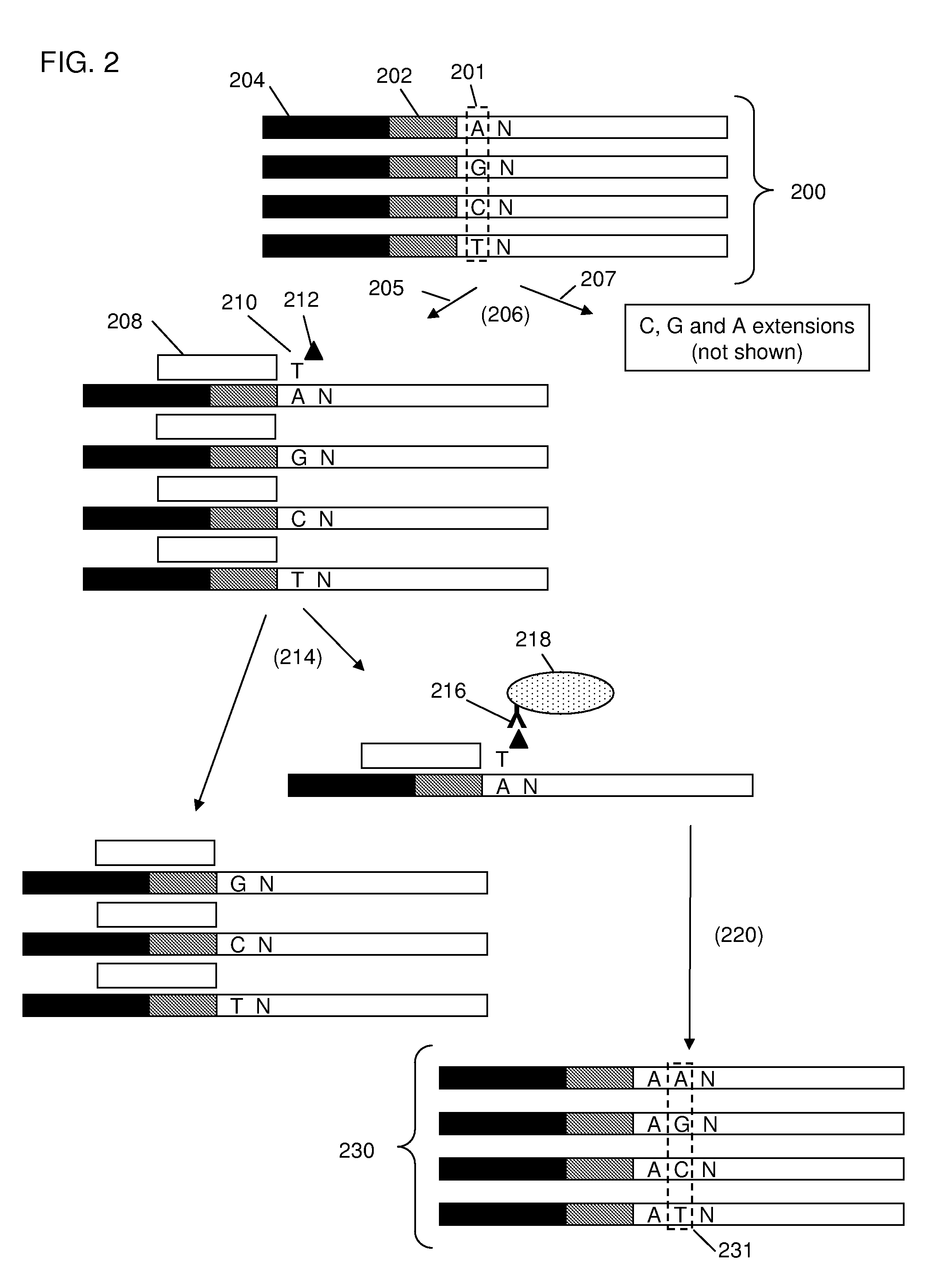Methods and compositions for reducing the complexity of a nucleic acid sample
a nucleic acid and complexity technology, applied in the field of genetics research, can solve the problems of difficult implementation, reduced sensitivity, and no throughput or flexibility for the types of studies required, and achieve the effect of reducing complexity
- Summary
- Abstract
- Description
- Claims
- Application Information
AI Technical Summary
Benefits of technology
Problems solved by technology
Method used
Image
Examples
Embodiment Construction
[0057]The invention provides methods and compositions for sorting polynucleotides based on sequence characteristics to form subpopulations of reduced complexity (as compared to the parent sample). Reduced complexity samples produced by the methods described herein are also provided. In certain aspects, such sorting methods are used reduce the complexity of a polynucleotide sample derived from a single subject (or source, e.g., a human), whereas in other aspects, the sorting methods are used to reduce the complexity of polynucleotide samples containing a mixture of polynucleotides from a plurality of subjects (e.g., genomic DNA fragments from multiple sources, e.g., human subjects). In certain embodiments, the polynucleotides from the plurality of subjects are each tagged with a unique identity tag which serves to allow the subject from which each polynucleotide was derived to be determined, e.g., after further sample manipulation / analysis. Determining the identity of the identity ta...
PUM
| Property | Measurement | Unit |
|---|---|---|
| temperature | aaaaa | aaaaa |
| temperature | aaaaa | aaaaa |
| temperature | aaaaa | aaaaa |
Abstract
Description
Claims
Application Information
 Login to View More
Login to View More - R&D
- Intellectual Property
- Life Sciences
- Materials
- Tech Scout
- Unparalleled Data Quality
- Higher Quality Content
- 60% Fewer Hallucinations
Browse by: Latest US Patents, China's latest patents, Technical Efficacy Thesaurus, Application Domain, Technology Topic, Popular Technical Reports.
© 2025 PatSnap. All rights reserved.Legal|Privacy policy|Modern Slavery Act Transparency Statement|Sitemap|About US| Contact US: help@patsnap.com



